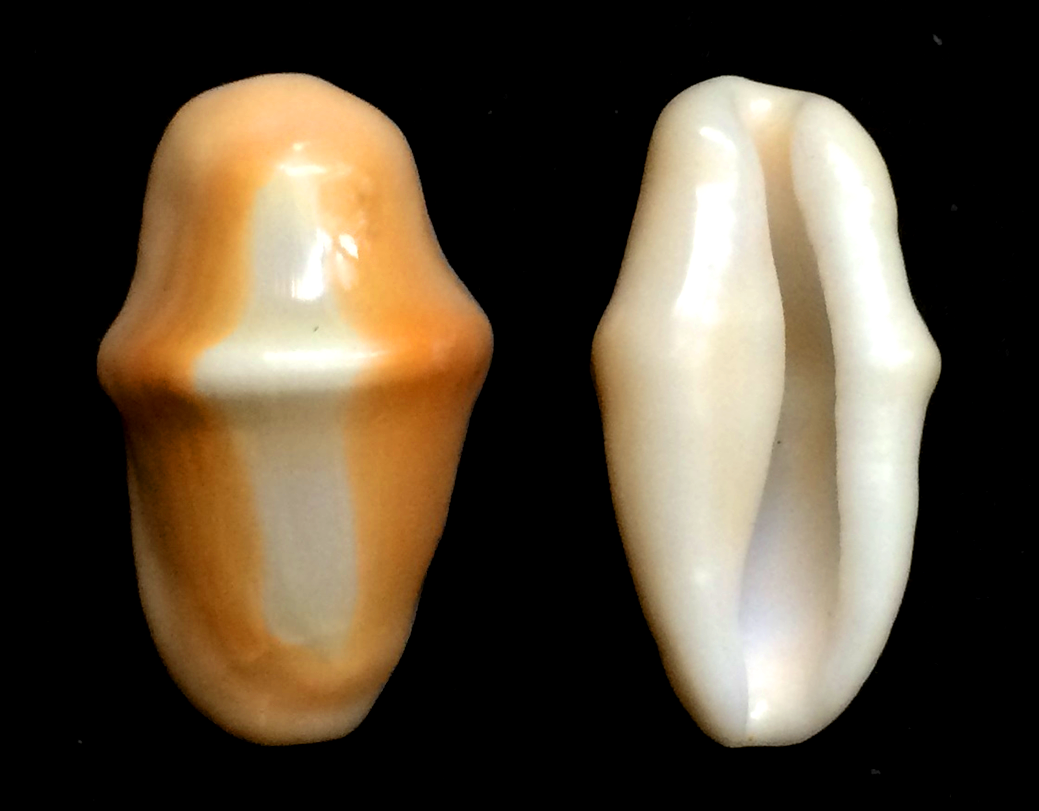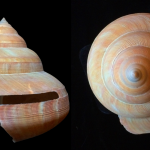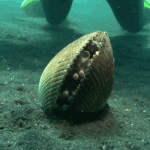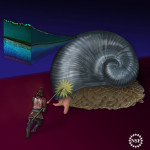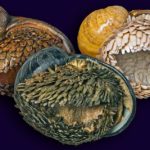
Not all snails scour the ocean bottom for algae and muck, but some have more refined tastes. But taste is one thing, and having the tool to get that food is what gastropods do best. Snails have a unique tooth-studded tongue – the radula – that natural selection has warped into a wide variety of specialized tools that get them the food they need, no matter if it may seem bizarre to upright naked apes like us.
The Tongue that Bites
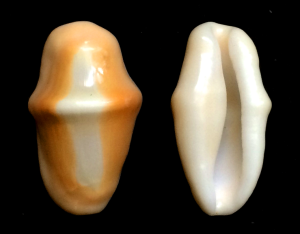
Take this shell for example, so smooth it’s hard to tell if it was even in focus when photographed, is that of the Flamingo Tongue snail (Cyphoma gibbosum, Ovulidae). With satin pastel hues of pink and orange, the shell is worthy of a Miami Art Deco speakeasy, but the mantle that shrouds the shell adds a flair of early 1960’s cubist psychedelia. Most are barely
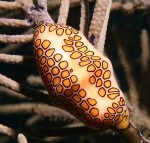
longer than an inch in length as adults, but size doesn’t matter since what they eat are the tiny, succulent coral-like polyps that make up the colonies within a sea fan. In the warm, shallow Caribbean Sea, a Flamingo Tongue Snail will graze on a sea fan, scraping and plucking out polyps, leaving a stark, lifeless trail behind. In areas where mollusk-eating fishes have been eliminated, the absence of their natural predators causes the snail population to explode, wreaking long-term and widespread damage to the slow-growing sea fans and the habitats they create.
Oyster Shooter
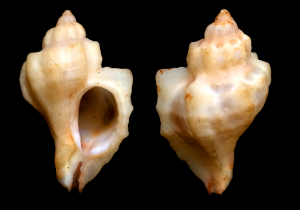
Who doesn’t love oysters? Ok, except vegetarians, and sure, those with shellfish allergies, but slurping down a raw oyster with a dab of Tabasco sauce and a squeeze of lime followedby an ice-cold lager is a marine biologist’s equivalent to a dose of Ativan. This water-worn little shell, less than two inches long, also loves oysters, but eats them in an entirely different way. The Japanese Oyster Drill (Ocenebra inornata, Muricidae) is far too small to eat an entire oyster, and too weak to pry open the shell, so it tries an entirely different method, one that you would expect in some freaky David Cronenberg film. The radula that in most species of snails are used as a rasp to scrape food off a

substrate, say algae off a rock or bits of meat off a dead fish. In this species, the radula is developed into an abrasive augur-like structure that can literally drill through the shell of other mollusks, and in particular, the sedentary oyster. Secretion of acidic enzymes through the proboscis containing the drill softens up the shell to make drilling quicker. Once the shell is perforated, the snail will then suck out the oyster’s fluids and soft tissues. Even more interesting, the evolution of a drill-like radula has been achieved independently in several different unrelated
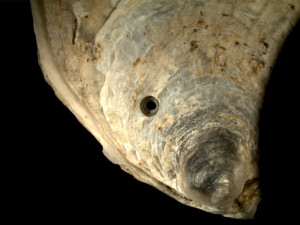
lineages of predatory snails. But too many oyster drills can wreak havoc in an oyster bed, and this species in particular has been accidentally introduced into ecosystems far outside eastern Asia, proving them to be a serious invasive pest in regional shellfish industries.
Neritic Nosferatu
If you thought that a marine snail with an auger-like set of teeth drilling into an oyster to
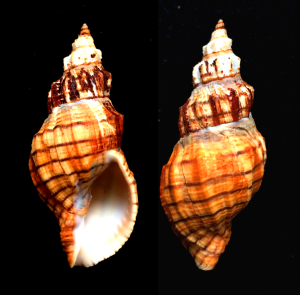
suck out its juices was weird, I’m going to up the ante. As you’ve read in various postings about marine gastropods, you know the tooth-studded radula is a diverse and effective organ to acquire food. But scraping and drilling are just a few of the adaptations among marine snails, and this ruggedly handsome Cooper’s Nutmeg snail (Cancellaria cooperi, Cancellariidae) has another trick. Its sharp, almost scalpel-like teeth bite a small slit into their sleeping prey, and when the prey begins bleeding, their proboscis is pressed against the wound to casually sip the flowing blood. A vampire snail on its own seems earn
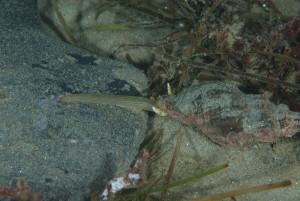
enough weirdness points, but it doesn’t stop there. Cooper’s Nutmeg seems to be an ectoparasite specializing on the California Electric Ray (Torpedo californica), a fish with high enough voltage to knock out any potential prey and foe alike, but somehow it doesn’t seem to detect the snail. Experiments in aquarium settings, as well as observations in the wild, suggests this snail specializes only on electric rays, with some observations showing over a dozen snails feeding simultaneously off a single ray, and has yet to be documented feeding on any other species of fish.
Cone of Silence
Last up in our series of marine gastropods and their strange adaptations for feeding is a good candidate for the next campy horror film. You may remember from past episodes that
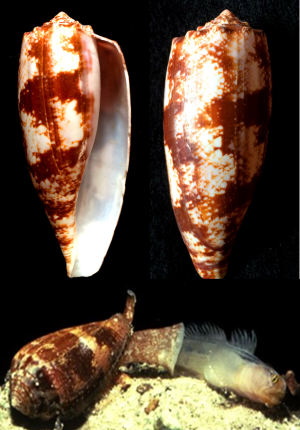
cone snails (Conidae) have a highly-specialized harpoon-like radula and associated venom gland that makes them highly toxic predators. The Geography Cone (Conus geographus) is a slow, silent hunter on the midnight reefs where it seeks out sleeping reef fishes (yes, fish do sleep) by their acute sense of smell. Once within close range of a fish, the large mouth, really an expandable funnel-shaped shroud, releases a complex cocktail of nearly two dozen different paralytic toxins called the “nirvana cabal” including insulin that causes the prey to become lethargic by creating hypoglycemic shock, like the knock-out gas in an old James Bond movie. When the dazed fish is engulfed by the mouth, the harpoon is fired into the fish, quickly killing them. One look at the aperture of the shell shows an opening much wider than most other species of cone snails, and this allows the snail to swallow the entire fish into the main chamber of the shell. While their venom is primarily used for prey capture, it can be turned defensively on their predators. In fact, the Geography Cone is regarded as one of the most venomous of marine animals, and is responsible for no less than 30 documented cases of death in humans, though the actual number is likely much higher since traces of the venom are difficult to detect and effects of the toxins may mimic other more common causes of death, like heart attack.

